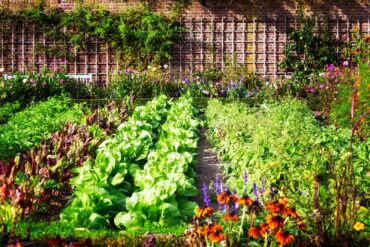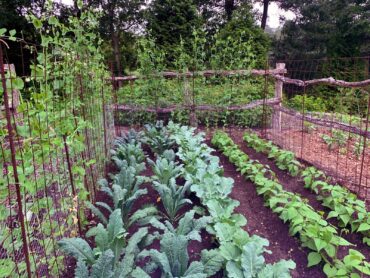 “When the pandemic hit, I decided to plant a vegetable garden.”
“When the pandemic hit, I decided to plant a vegetable garden.”
I’ve heard this from consultation clients and Plantrama listeners for the past three months, and my response is always the same. “Congratulations! You made a terrific choice.”
I recognize that the stress of the COVID-19 crisis can easily prompt people to eat sweets or binge-watch old television series, so it’s wonderful to hear that many were also motivated to do something life-affirming like planting vegetables.
If growing veggies is new to you or if you’ve recently returned to gardening after a few years’ hiatus, you might be in need of some midsummer maintenance reminders. So, here are some tips that will keep your gardens productive and your dinner table loaded with the freshest, tastiest food on earth.

Did You Plant Too Much?
At the start of the planting season, the young vegetables are so small, and our planting area seems so large. Yet once the weather warms most plants start to explode and that once-spacious raised bed is now crowded.
What should you do when, for example, your summer squash is covering the beets and the kale has overtaken the carrots?
Many of your plants can be made more vertical, so start there. Stake any tall kale, broccoli, eggplants and peppers that are leaning over and smothering the neighboring crops.
If your summer squash is near the edge of a bed, let it drape over raised boxes or grow into the surrounding area. And if some of your plants are just too close together, thin them out by pulling or cutting every other one to give remaining crops more space.
Remember that the lettuce, kale, chard and similar leaf crops you’re thinning are all edible, so bring the plants you’ve cut into your kitchen.
When to Pick Your Vegetables
One common mistake novice vegetable growers make is not harvesting quickly. It’s tempting to leave that row of lettuce heads, for example, because they look so beautiful
Yet when it comes to our veggie gardens, keep in mind that constant harvesting can also mean more food for your table.
Tips for harvesting:
- Cut off the largest leaves on lettuce, chard and kale plants and use those in your salads.
- Pick green beans every other day so that the plants will continue to flower and produce more.
- Cut broccoli heads when they “look like broccoli,” even though those heads might be significantly smaller than the ones you find in the supermarket. (Another broccoli fun fact: Most plants will continue to produce side shoots of tiny heads all summer. Pick these before they go to flower and you’ll have enough small, tender broccoli for salads, omelets and pasta dishes into the fall.)
Finally, once your lettuce, radishes or other greens start to flower, it’s time to pull them up and plant again.
What To Do About Weeds
The weeds that seemed insignificant in June can explode into gigantic plants in July. Even experienced vegetable growers will walk into their garden and say, “Where did that huge weed come from?”
Some heat-loving weeds prosper close to the ground as well, so during your summer maintenance, you might be seeing crabgrass, carpet weed and purslane in the garden. Unfortunately, there is no magic wand for this. They need to be pulled.
I highly recommend the “cup-of-coffee-glass-of-wine” approach to weeding. Go out in the morning or evening with your favorite beverage and pull weeds, pausing occasionally to take a sip and enjoy the day. Once your beverage is done, stop. The weeds will be there tomorrow, and you can go out with your drink once again.
Needless to say, if you live in a very hot part of the country, the early morning is the best time for weed control. Don’t overdo it and this will help make this summer maintenance so much better.
(I’d be remiss if I didn’t mention that my Plantrama co-host, Ellen Zachos, would say that many of the weeds in your garden are probably edible. Check out her “Backyard Forager” book or website for more information.)
Also, the use of mulch can suppress the growth of a majority of weeds, and it makes summer maintenance much easier. It’s not too late to add a couple of inches of chopped leaves, straw, hay or other organic material to cover bare soil.
Watering Tips
When you planted your vegetables, they were easily moistened with a wand on the end of a hose. Chances are, you even enjoyed this ritual. But in the heat of the summer, hand watering is seldom enough.
First of all, people get bored long before those plants get a good, deep soaking, and a thorough drenching ensures deeper stronger roots. Secondly, it’s human nature to aim the water at the base of the stem, ignoring the surrounding soil — which is where the roots are actively growing. If local ordinances permit watering with soaker hoses or a sprinkler, use these, watering deeply but less often.
After the Harvest
Once your peas and lettuce have gone by and the garlic heads harvested, you have open real estate where more food can be planted. In many parts of the country, seeds for carrots, kale, arugula, lettuce, pak choi and chard can be planted in these spots. These are all crops that will thrive even as the temperatures cool, so don’t hesitate to sow something new.
This post is provided as an educational/inspirational service of the National Garden Bureau and its members.






























Comments